Starting a vegetable garden for the first time is both exciting and nerve-wracking. We, along with all other gardeners, know the feeling! You want so badly to grow your own food, but aren’t quite sure what steps are necessary to get started. This guide on how to start vegetable gardening for beginners has all of the basic info you need to take those first steps toward harvesting your own food.
The Basics of Vegetable Gardening For Beginners
The first and most important thing about vegetable gardening (or any gardening for that matter!) is to come to terms with the fact that every garden is different. There are no “one size fits all” gardening plans or guides. What works for your next door neighbor might be disastrous for you, and that’s okay.
Trial and error are huge parts of the gardening process. This is what gets people excited every single year for gardening season – figuring out what will work better than last year.
There are a variety of factors that determine the success or failure of a garden, some of which are out of our control. The biggest of these is the weather. Every year sees different levels of rain, heat, sun, drought, frost, or wind, making it difficult to predict and prepare for ahead of time.
Other determinant factors vary by region. These include hardiness zones, frost dates, pests, and diseases. Check out what USDA hardiness zone you live in on this interactive map. Any and all plants you choose should be able to live in whatever hardiness zone you live in. Almost all seed packets will have what zones a plant can tolerate listed on the packaging.
Lastly, if you want to have a successful vegetable garden, it’s important that you have enough time to commit to your new obligation. Although small plots don’t require constant attention, they can’t be left alone for too long. If you have a big month-long trip planned this summer, it might not be the best year to start a vegetable garden. Even if you have some smaller trips planned, make sure you have someone who can water and/or pick your plants every other day, if needed.
Permaculture and Vegetable Gardening
Here at Modern Day Self Reliance, we are big proponents and believers in utilizing permaculture principles to minimize our harm to the land and maximizing our harvest. Permaculture is an integration of ecological components and processes into human-directed applications that solve wants and needs sustainably, creating a richer, more productive environment as a result.
Gardens designed with permaculture principles emulate patterns in nature. This can be accomplished with something as small as a container garden, all the way up to a full-acre food forest. We strongly recommend anyone starting a vegetable garden to evaluate the space you plan to use, and plan your garden with permaculture principles in mind.
If you’re not familiar with these principles, read this short intro to permaculture to learn more.
Now that we’ve gone over the basics of vegetable gardening for beginners, it’s time to get into more specific information you need to think about when starting your new vegetable garden. I’ve outlined 9 tasks in a specific order every beginner vegetable gardener should do!

1. Define your gardening goals
Although it may not seem like it, everyone has a goal for their garden. Even if you’re just trying it out as a fun hobby, you probably still want a successful harvest, right?
If you’re a true beginner, it’s smart to set realistic goals. Unfortunately, you won’t be growing enough food to feed yourself for an entire year right from the beginning. But if that’s a future goal you have, it’s great to keep that in mind while planning your first vegetable garden. You’ll have a different mindset than someone growing plants just for fun.
So, ask yourself: why do you want to garden?
After you’ve thought about that, set one or two realistic goals for your first vegetable garden. Here are some ideas:
- Grow 3 of your favorite vegetables
- Grow a small scale self-sufficiency garden
- Be able to make an entire salad from your own freshly picked veggies
- Keep all plants alive by paying close attention to health and learning the care requirements for each one
- Try one plot of in-ground growing and one raised garden bed to see which one works better for your yard
- Enjoy the process (this should be one of everyone’s goals!)

2. What type of garden will you plant?
We don’t all have big backyards with excellent soil. Maybe you don’t even have a yard at all. Thankfully there are ways to work with whatever space you do have. There are 3 main types of gardening to consider when evaluating where you want your vegetable garden to be: in-ground garden, raised bed garden, and container garden.
Below are short explanations of each type, along with things to consider before choosing your method.
In-ground garden:
An in-ground vegetable garden is exactly what it sounds like – the plants are sown directly into the ground. If you have the outdoor space, this is the easiest method to set up. Here’s an excellent step-by-step guide to get you started.
Things you should consider before deciding on an in-ground vegetable garden are:
- Soil quality – it’s a good idea to test the pH of your soil to see if it’s basic, neutral, or acidic. This article will tell you all about soil pH and why it matters.
- Amount of sunlight – remember trees will have leaves in the summer! Some vegetables need full sun, and others like partial sun.
- Proper drainage – make sure your plot has well-draining soil and does not pool up in the rain. Soggy soil can cause root rot and mold (both bad).
- Animals – unless you already have a fenced-in backyard, it’s a good idea to put up a fence around your garden plot. You never know what critters will come out of the blue to chomp on your veggies.
Raised Bed Garden
A raised bed is when your garden is planted in soil that sits at a level above the ground. A raised bed has four walls that contain the bed of soil. There are many different ways to build a raised bed, which makes this garden type all the more flexible. It can also be difficult to choose a layout, since there are so many options! Here’s one from Home Depot perfect for small patios or apartments.
Raised garden beds are great if you don’t have grass or dirt to turn into an in-ground plot. They’re also great if you have poor drainage in your yard, or don’t like to bend over all the time. Find out more specifics about raised garden beds here.
Things you should consider before deciding on a raised bed vegetable garden are:
- Cost. You’ll need materials to build the sides of the bed with, along with soil to fill it in.
- What materials you’ll use to build it. You can make a raised bed out of almost anything – it’s time to get creative!
- What you’ll fill it in with. Of course you’ll need topsoil on the top, but if you have a 4 foot high raised garden bed, that much topsoil will be very expensive. Layer the bottom half with compost, leaves, wood, sticks, or other decomposing materials that will add nutrients to your soil and keep the lower soil airy for greater root penetration.
- Will it be permanent or portable? I suggest going portable. What if you build a permanent structure only to find out after your first summer that it would be better on the other side of your yard?
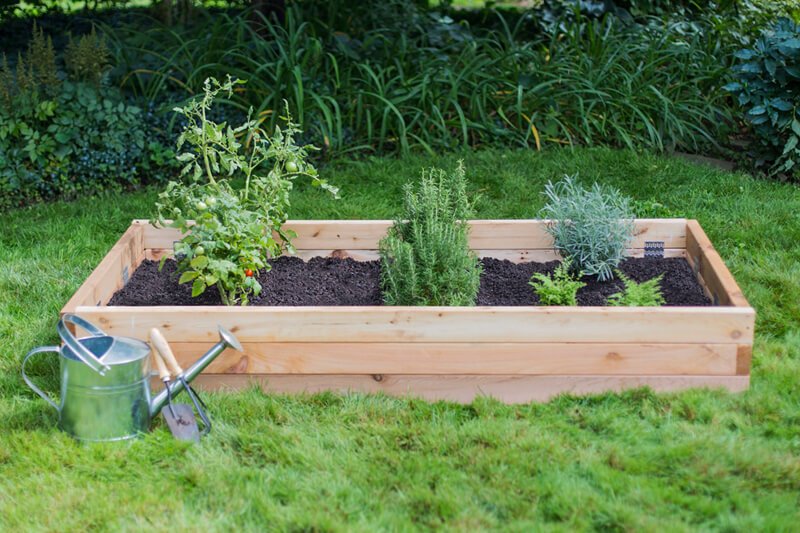
Container Gardening
Growing vegetables in containers is great for anyone who is limited in space or tools. Container gardening is just what it sounds like – you grow your plants in pots, buckets, bins, or basically whatever container you have that’s big enough for what you’re growing.
That’s right, you don’t need a huge fancy $53 pretty pot from the gardening store. The basic requirements for a container are that it’s big and deep enough for the plants, and it has adequate drainage. 5 gallon buckets, plastic storage bins, or even growing a plant straight in a bag of soil are all options. Get more specific info on container gardening here.
Things you should consider before deciding on a container vegetable garden are:
- How much space you have for containers. Measure out how much space you have on your porch, deck, or windowsill and calculate how many containers you can fit. Remember they need to have adequate sunlight.
- Do you already own any containers big enough to use? You’d be surprised when you start rummaging around in the basement or garage what might be repurposed as a container.
- Buying soil. Once you know what size and how many containers you’re going to use, calculate how the volume of soil you need to buy to fill them. You may want to adjust the number of containers you use if it’s too expensive to buy soil for all of them.
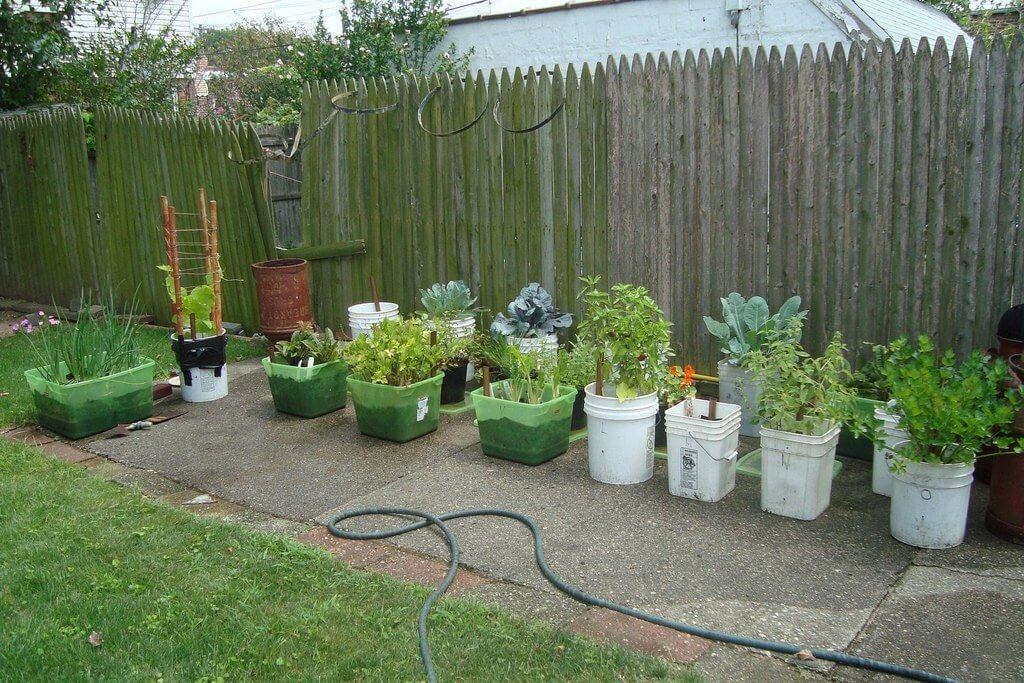
3. Set a budget for your garden
Gardening can get expensive if you don’t plan out your costs ahead of time. Buying plants from a nursery is more expensive than growing your own seedlings. But, growing seedlings requires some equipment you’ll have to buy your first year before you can get started.
Additionally, the 3 different vegetable garden types mentioned above all have varying costs associated with them. If you set a budget before deciding what to grow, you’ll be less likely to get carried away when buying seeds or plants. If your residence is connected to a public water source, leave some of your budget for a higher water bill.
4. Research frost dates and when you should start seeds and/or plant outside
We recommend doing this before you decide what to grow. Depending on what month you’ve decided to start your gardening adventure, it may be too late to start your own seeds.
This chart from Johnny’s Selected Seeds will give you all the dates you need to know. Just input the average frost-free date for your area and it will calculate when to plant your seeds and when to put them in the ground.
5. Decide what you want to grow
This is the fun part! When picking what vegetables to grow, the most important thing is that you should grow vegetables you both like and want to eat. We’re HUGE veggie lovers – there actually isn’t a vegetable we can think of that we dislike. So for us, it is admittedly easy to get carried away when picking what seeds to buy… we want to grow everything. This is not the most cost-efficient way to garden, however.
When deciding what vegetables to grow, ask yourself these 3 questions:
1. What vegetables do you eat the most? Unless your gardening goal is to try new vegetables, it makes the most sense to grow veggies you already eat a lot of.
2. If homegrown, which vegetables will save you the most money at the grocery store? If you’re picking between 2 veggies, figure out which one you spend more money on at the store. You might regularly buy a larger quantity of cucumbers than tomatoes on your weekly grocery run. However, tomatoes are more expensive, so it’s possible you actually spend more money on tomatoes than you do on cucumbers even though you’re buying more cucumbers.
3. What vegetables are the easiest to grow? Here is a list of the best vegetables to grow for beginner gardeners.
4. Which vegetables at the store contain the most pesticides that you would be better off growing at home? Many of us want to grow vegetables because we want control over what goes into them. Avoiding pesticides and artificial fertilizers is at the top of many people’s lists. There are fruits and vegetables that are notorious for containing the highest concentrations of pesticides, known as the “dirty dozen”, including:
- Apples
- Celery
- Cherry tomatoes
- Cucumbers
- Grapes
- Hot peppers
- Nectarines
- Peaches
- Potatoes
- Spinach
- Strawberries
- Sweet bell peppers

6. Decide if you want to start your own seedlings or buy plants from a nursery
There are certainly pros and cons to both options, so this decision will come down to a mix of personal preference and timing. Refer to the linked chart in #4 above to find out if it’s too late to start your own seedlings.
Seedlings are much less expensive to purchase than plants. They do require more equipment, though. You will need containers, growing lights, special soil, and if you want to go all out, heating mats. Depending on how many vegetable plants you plan on growing, it might be a good idea to compare costs between equipment and buying plants. Keep in mind that once you buy the equipment, you’ll have it for seasons to come.
Let’s create a hypothetical situation with tomato plants. Depending on where you buy them, and what stage in the growing process the plants are, 1 tomato plant could cost you anywhere from $2.00 – 7.00. If you only plan on growing one tomato plant, this isn’t a big deal. However if you want to grow several, the costs could add up quickly. Tomato seeds, on the other hand, cost $2.00 – 4.00 a packet, with 20-30 seeds in them.
Something else to think about is that you get to control everything that goes into your plants from the start if you grow from seeds. You can buy organic seeds, use only organic soil, and end up with delicious organic veggies come harvest time. You will almost certainly pay a premium for organic plants at the nursery.
If you want a specific unusual variety of a certain veggie, it will be easier to find the seeds. Nurseries grow popular varieties that they know people will buy. This means it will be harder to find unusual varieties, especially if you’re in a more rural area with less nurseries.
Lastly, if you decide that buying plants from a nursery is the best option for you, make sure you know the signs of a healthy plant! Read this article for more information on what to keep an eye out for.
7. Reuse materials that you already own or buy secondhand
Sustainability is incredibly important for our environment. Reusing plastic containers and other materials is a great way to do your part in reducing waste. If you decide to grow your own seedlings, save up small plastic containers that you would normally recycle to plant your seeds in.
If you don’t have any gardening tools, try to buy some secondhand off Craigslist or Facebook marketplace. The more “new” materials you can avoid purchasing, the better for our planet.
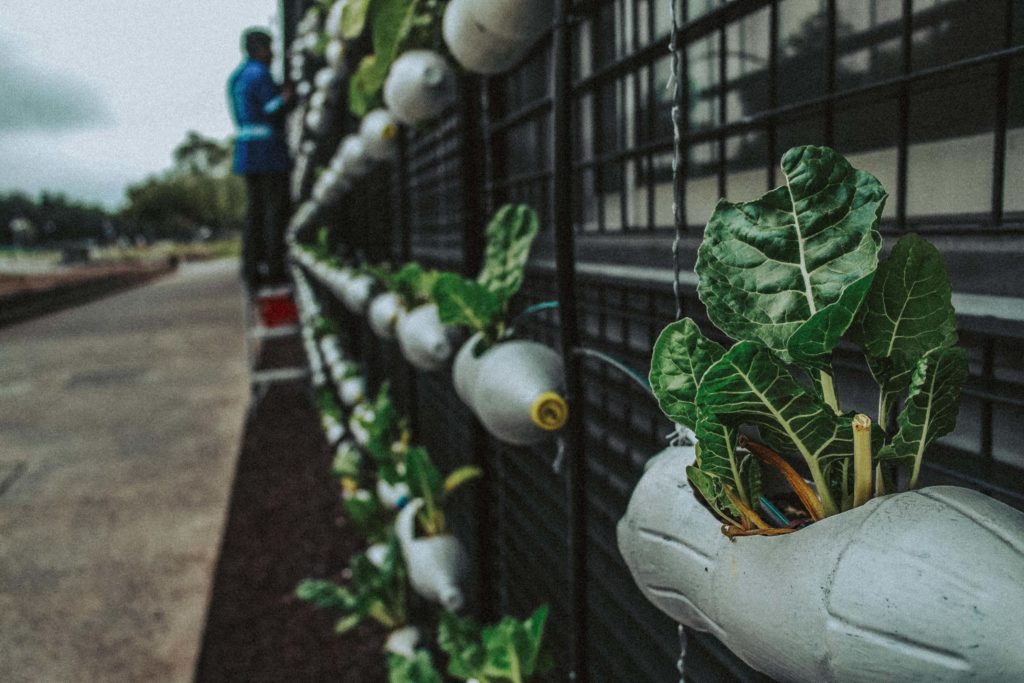
8. Document your journey
I highly recommend keeping a garden journal. It’s a great way to compare successes and failure over the years. After all, you never know what little detail could help you out in the future!
Here’s a great garden journal created by The New York Botanical Garden called Gardener’s Log Book: A 5 Year Planner. It has plenty of room to write and record what you’d like to, but it also has awesome reminders of seasonal tasks you should do in your garden yearly.
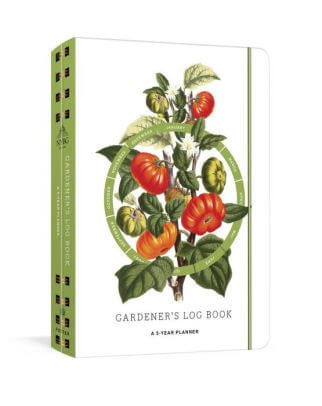
9. Don’t fret!
Gardening is supposed to be fun and relaxing. It’s easy to stress yourself out if you get wrapped up in the specifics and small details. While those are important, try to focus on the big picture. The goal is to grow your own food, and have fun doing it! Good luck and happy gardening 🙂

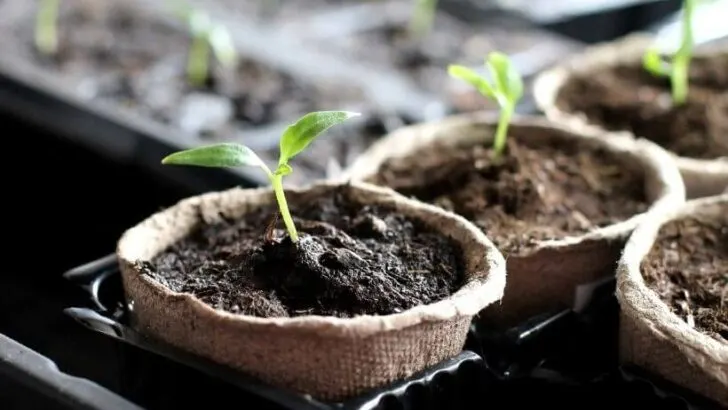
What Is Permaculture? An Introduction To Regenerative Gardening - Modern Day Self Reliance
Monday 26th of September 2022
[…] imitate natural processes as closely as possible. Anyone interested in homesteading, landscaping, gardening, and becoming more eco-friendly will benefit greatly from learning more about […]